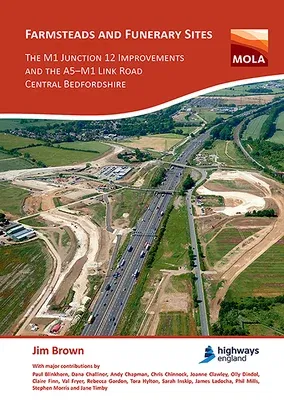MOLA (Museum of London Archaeology) undertook extensive excavations
during the construction of two separate, but adjacent road schemes, some
4.5km apart near Houghton Regis and Toddington, in south Central
Bedfordshire. Taken as a whole, the excavations provide a detailed
multi-period dataset for regional and national comparison. The first
evidence for occupation occurred in the middle/late Bronze Age
comprising pits and clusters of postholes, including four-post and
six-post structures. Two pit alignments, more than 2km apart, also
indicate that land divisions were being established, and in the late
Bronze Age/early Iron Age a significant new settlement emerged in the
valley bottom. Parts of a further contemporary earlier-middle Iron Age
settlement lay at the top of the valley but neither settlement extended
into the Roman period. In the late Iron Age or early Roman period three
or four new settlements emerged with occupation continuing into the late
Roman period in at least one of these. Of particular interest was the
recovery of two significant Aylesford-Swarling type cemeteries as well
as a third cemetery which largely comprised unurned burials, including
some busta, but with few accompanying grave goods. In the late
7th-century a small probable Christian conversion open-ground inhumation
cemetery was established with burials accompanied by a range of objects,
including a rare work box, knives, brooches, chatelaine keys and a
spearhead. Parts of three medieval settlements were uncovered including
one with a potters' working area.

